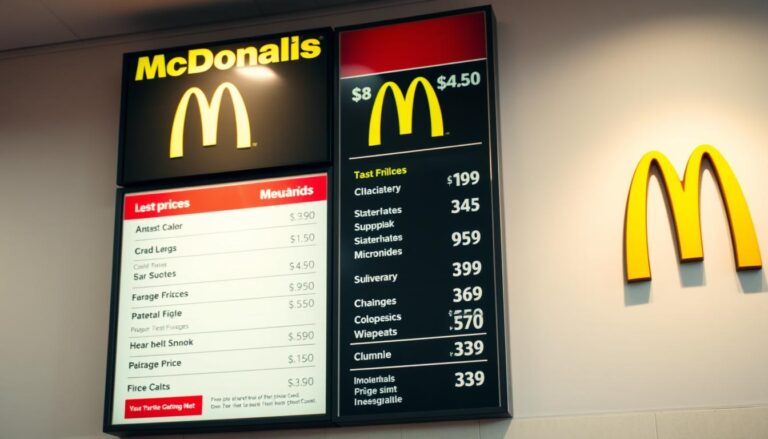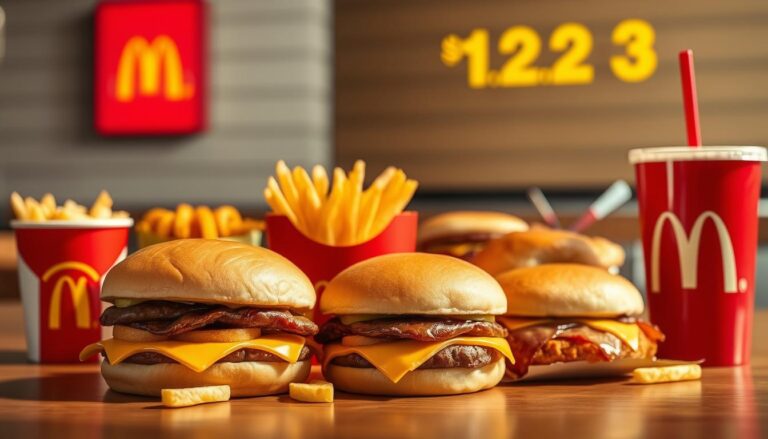Have you ever wondered what makes McDonald’s Honey Mustard so irresistible? This dipping sauce has become a staple for many fans of the chain. Made from a blend of zesty dijon mustard, notes of honey, and a hint of spices, it adds a unique flavor to various menu items.
As you explore the world of this beloved honey mustard sauce, you’ll discover its versatility and the way it complements a range of foods. In this article, we’ll delve into the ingredients, nutritional profile, and creative uses of this signature McDonald’s sauce.
The Story Behind McDonald’s Honey Mustard
McDonald’s expanded its condiment lineup with the introduction of Honey Mustard several years ago. This move was part of their strategy to offer customers more diverse flavor options beyond the traditional ketchup and mayonnaise.
When McDonald’s Introduced Honey Mustard
The initial formulation of Honey Mustard was designed to complement McDonald’s chicken offerings, particularly when they launched new chicken products that required a sweeter and tangier accompaniment than their existing sauces. This was a significant step as it marked a shift towards enhancing the overall flavor experience for their customers.
As McDonald’s introduced their Honey Mustard sauce, it was clear that the chain was responding to customers’ growing desire for more varied condiment options. The sauce quickly became a favorite among customers, pairing well with chicken nuggets and other menu items.
Evolution of the Recipe Over the Years
Over time, McDonald’s has made subtle adjustments to the Honey Mustard recipe. These changes have been aimed at balancing the sweetness and tanginess to appeal to changing consumer preferences while maintaining its recognizable flavor profile. You’ll notice that the sauce has evolved to have a more consistent texture and appearance over the years, with the current version featuring visible spice flecks that weren’t present in earlier iterations.
| Year | Change in Recipe | Impact on Flavor |
|---|---|---|
| Initial Launch | Original Formulation | Balanced Sweetness and Tanginess |
| After 2 Years | Addition of Spice Flecks | Enhanced Flavor Profile |
| Current Version | Refined Texture | More Consistent Taste Experience |
The development of McDonald’s Honey Mustard reflects the chain’s commitment to enhancing the customer experience through complementary condiments that elevate their core menu items. Food historians note that the introduction of specialty sauces like Honey Mustard marked a significant shift in fast food marketing, as chains began competing not just on their main offerings but on the entire flavor experience.
As you can see, the story behind McDonald’s Honey Mustard is one of innovation and adaptation to customer preferences. The sauce has become an integral part of the McDonald’s experience, offering a unique flavor that complements a variety of menu items.
What Makes McDonald’s Honey Mustard Unique
You might be wondering what makes McDonald’s Honey Mustard so special compared to other fast-food chains. The answer lies in its signature flavor profile and carefully crafted ingredients. McDonald’s Honey Mustard Sauce is made from a blend of zesty dijon mustard, notes of honey, and a “hint of spices,” according to the chain’s website.
Signature Flavor Profile
McDonald’s Honey Mustard stands out from competitors with its distinctively sweet flavor profile that emphasizes honey notes over the traditional mustard tang found in other versions. Unlike many fast-food honey mustards that balance sweetness and tanginess equally, McDonald’s version leans heavily toward the sweeter side with a more subtle mustard presence.
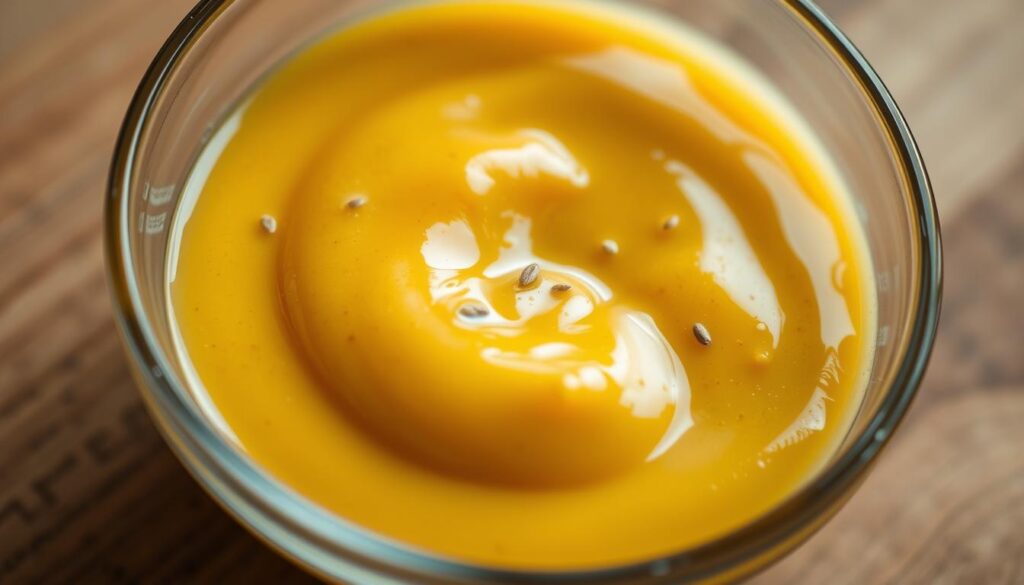
Comparison to Other Fast Food Honey Mustards
When comparing McDonald’s Honey Mustard to other fast-food honey mustards, several differences become apparent. The proprietary blend of spices in McDonald’s sauce gives it a unique complexity not found in standard honey mustard formulations. Additionally, McDonald’s uses a specific type of dijon mustard base that provides a milder, less pungent foundation than the sharper mustard varieties used by some competitors.
| Feature | McDonald’s Honey Mustard | Other Fast Food Honey Mustards |
|---|---|---|
| Flavor Profile | Sweet, with emphasis on honey notes | Balanced sweetness and tanginess |
| Mustard Base | Milder dijon mustard | Sharper mustard varieties |
| Spice Blend | Proprietary blend for unique complexity | Standard honey mustard formulations |
The consistency of McDonald’s Honey Mustard is carefully calibrated to be thick enough for dipping but smooth enough to spread easily, striking a balance that works well for multiple applications. Food experts note that the way McDonald’s formulates their Honey Mustard creates a more approachable flavor for mass appeal, deliberately avoiding the vinegary sharpness that characterizes some artisanal or competitor versions.
Complete Ingredients List of McDonald’s Honey Mustard

Understanding what goes into McDonald’s Honey Mustard can enhance your appreciation for the sauce. This popular condiment is a staple for many McDonald’s customers, particularly those who enjoy it with chicken offerings.
Primary Ingredients
The primary ingredients in McDonald’s Honey Mustard include water, soybean oil, corn syrup, honey, distilled vinegar, egg yolks, and various forms of mustard such as ground mustard seeds and Dijon mustard. These components work together to create the sauce’s distinctive sweet and mildly tangy flavor profile.
Preservatives and Additives
To maintain its creamy consistency and extend shelf life, McDonald’s Honey Mustard contains several emulsifiers and stabilizers, including xanthan gum and modified food starch. The preservative system includes ingredients like potassium sorbate and calcium disodium EDTA, which help maintain flavor integrity.
Allergen Information
It’s crucial to note that McDonald’s Honey Mustard contains egg and mustard, two common allergens. Customers with sensitivities should be aware of these ingredients before using the sauce for dipping.
McDonald’s formulates this sauce to maintain consistency across all locations, ensuring that the Honey Mustard you enjoy in California tastes identical to what you’d get in New York. The flavor enhancers in the sauce include natural flavors and spices that contribute to its complex taste profile, though the exact spice blend remains proprietary information.
By understanding the ingredients and formulation of McDonald’s Honey Mustard, you can better appreciate the craftsmanship that goes into creating this beloved condiment.
Nutritional Breakdown of McDonald’s Honey Mustard
If you’re watching your diet, knowing the nutritional breakdown of McDonald’s Honey Mustard is essential. This sauce is a popular choice among McDonald’s customers, and understanding its nutritional content can help you make informed decisions about your meal.
Calories and Macronutrients
McDonald’s Honey Mustard sauce contains 60 calories per serving, with 3.5 grams of fat, of which 0.5 grams are saturated fat. The carbohydrate content is 6 grams, including 4 grams of sugar, primarily from honey and corn syrup. Notably, the sauce contains no protein.
| Nutrient | Per Serving |
|---|---|
| Calories | 60 cal |
| Fat | 3.5 g |
| Saturated Fat | 0.5 g |
| Sodium | 125 mg |
| Carbohydrates | 6 g |
| Sugar | 4 g |
| Protein | 0 g |
Sodium Content
The sodium content of McDonald’s Honey Mustard is 125 mg per serving, which is relatively lower compared to many other fast food sauces. This makes it a potentially better option for those monitoring their sodium intake.
How It Fits Into Different Diets
For those with specific dietary needs, McDonald’s Honey Mustard sauce is gluten-free but not vegan due to its egg content. It contains minimal fiber (1g) and no protein, contributing mainly to fat and carbohydrate intake. When incorporating this sauce into your meal, consider that while it adds flavor, it also adds calories, so moderation is key.
As you consider adding McDonald’s Honey Mustard to your meal, remember that it’s a part of your overall dietary intake. Using it in moderation is the best way to enjoy its flavor while maintaining dietary balance.
McDonald’s Honey Mustard vs. Other McDonald’s Sauces
McDonald’s offers a variety of sauces, but how does their Honey Mustard compare to the rest? When evaluating the different sauce options, several factors come into play, including flavor profile, nutritional content, and overall popularity among customers.
Flavor Comparison
McDonald’s Honey Mustard is distinctively sweeter than other options like Tangy BBQ sauce or Hot Mustard, placing it on the milder end of the flavor spectrum. In contrast, Tangy BBQ sauce is described as “balanced and flavorful” with tangy, smoky, slightly sweet, and savory notes. The Honey Mustard’s flavor profile is often described as overwhelmingly sweet with a barely detectable mustard taste, which can be a drawback for some consumers.
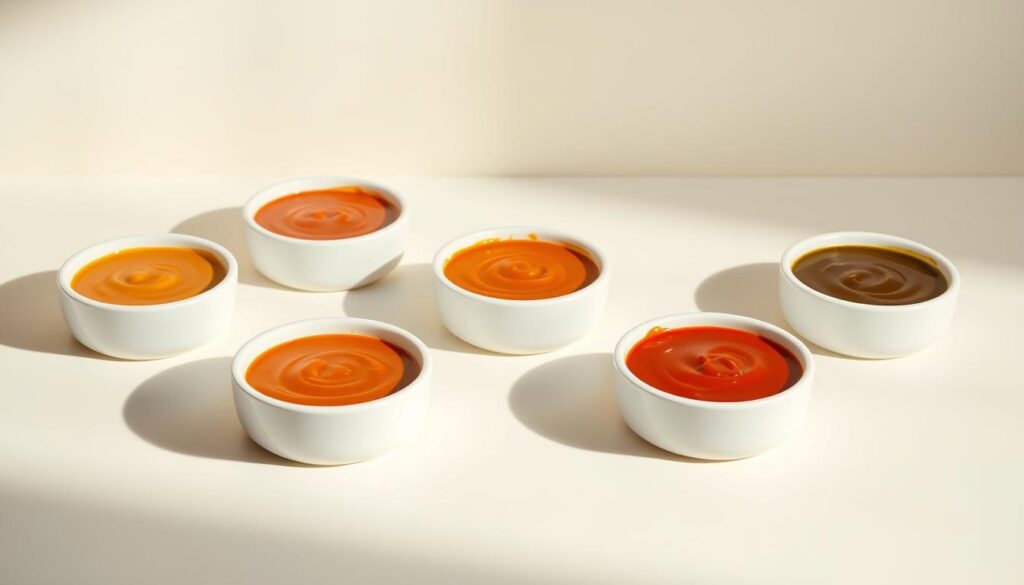
Nutritional Comparison
Nutritionally, Honey Mustard falls in the middle range with 60 calories per serving. It’s lighter than Creamy Ranch sauce, which has 110 calories, but slightly heavier than Tangy BBQ sauce, with 45 calories. The sodium content in Honey Mustard is 125mg, significantly lower than Spicy Buffalo sauce, which contains 520mg, making it a relatively better choice for those monitoring their salt intake.
Popularity Ranking
In taste tests, McDonald’s Honey Mustard often ranks below Tangy BBQ sauce and Sweet ‘N Sour sauce in overall popularity. While it has a dedicated fan base, particularly for chicken items, it doesn’t enjoy the same universal appeal as Tangy BBQ sauce. The creamier consistency of Honey Mustard provides a distinct textural experience when used as a dip, setting it apart from the more viscous Sweet ‘N Sour sauce or the thinner Tangy BBQ sauce.
When comparing McDonald’s sauces, it’s clear that each has its unique characteristics. Honey Mustard’s visible spice flecks give it a visually distinctive appearance compared to the uniform look of Sweet ‘N Sour or the darker Tangy BBQ sauce. Understanding these differences can help you choose the best sauce to complement your meal.
Best McDonald’s Menu Items to Pair with Honey Mustard

McDonald’s Honey Mustard is a versatile sauce that pairs well with many menu items, enhancing the flavor of your meal. Whether you’re a fan of classic combinations or like to try new things, there’s a perfect pairing for you.
Classic Pairings
The most popular pairing for McDonald’s Honey Mustard is with Chicken McNuggets. The sweet and tangy honey mustard complements the savory, crispy exterior of the nuggets perfectly. Another classic pairing is with Buttermilk Crispy Chicken Tenders when they’re available. The higher-quality chicken benefits from the complex flavor profile of the sauce.
Unexpected Combinations That Work
Some customers have discovered that dipping french fries in Honey Mustard creates a surprisingly delicious sweet-salty combination. It’s a great alternative to ketchup and adds variety to your meal. Adding Honey Mustard to the McChicken sandwich can elevate it by creating a more flavorful experience than the standard mayonnaise alone.
Customer Favorites
Customer surveys show that while most stick to traditional pairings, some adventurous eaters enjoy adding Honey Mustard to their Chicken McGriddles or grilled chicken offerings. It’s also been found that adding Honey Mustard to burgers, particularly Quarter Pounders, can be a game-changer, offering a new twist on a classic food item.
By exploring different pairings, you can find your new favorite way to enjoy McDonald’s Honey Mustard sauce with various menu items.
Creative Ways to Use McDonald’s Honey Mustard
You can use McDonald’s Honey Mustard in numerous creative ways beyond just dipping your favorite foods. This versatile sauce can add flavor and excitement to various dishes, from sandwiches and salads to grilled meats and baked goods.
Sandwich Spreads
McDonald’s Honey Mustard makes an excellent spread for homemade sandwiches, adding a sweet and tangy dimension to your creations. You can use it on turkey, ham, or chicken sandwiches for an extra layer of flavor. Simply apply a generous amount to your bread before adding your favorite fillings.
Incorporating Into Home Recipes
There are several ways to incorporate McDonald’s Honey Mustard into your home recipes. For instance, you can transform plain grilled chicken by using it as a quick glaze during the last few minutes of cooking. This creates a caramelized, flavorful exterior that’s sure to impress.
- Use it as a marinade base for chicken, pork, or firm tofu, combining it with a small amount of acid like lemon juice or vinegar for tenderizing properties.
- Add it to deviled egg filling for a distinctive appetizer.
- Use it as a glaze for savory pastries or as a flavor enhancer in cheese-based quick breads.
Salad Dressing Ideas
For a simple yet effective salad dressing, try mixing McDonald’s Honey Mustard with a small amount of olive oil and a splash of vinegar. This custom vinaigrette works particularly well with chicken salads, adding a rich and tangy flavor.
You can also incorporate McDonald’s Honey Mustard into potato salad dressing for a unique twist on the classic side dish. The honey mustard sauce adds a depth of flavor that will have your guests asking for your secret ingredient.
By exploring these creative ways to use McDonald’s Honey Mustard, you can elevate your meals and discover new favorite food pairings. Whether you’re looking for a new way to enjoy your favorite dishes or seeking inspiration for innovative recipes, this versatile sauce is sure to become a staple in your kitchen.
How to Get McDonald’s Honey Mustard Sauce
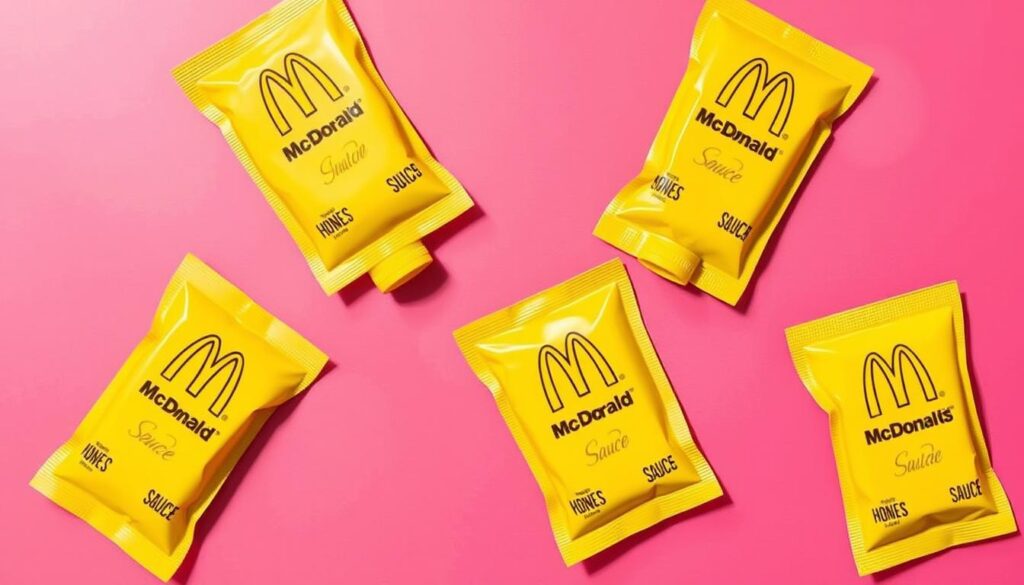
If you’re craving McDonald’s Honey Mustard sauce, you’re in luck because there are several ways to get your hands on it. McDonald’s Honey Mustard is a beloved condiment that pairs perfectly with their menu items, especially Chicken McNuggets.
Ordering Extra Packets
You can typically obtain McDonald’s Honey Mustard sauce by ordering it with your meal, specifically with items like Chicken McNuggets that are meant for dipping. When placing your order, you can ask for extra sauce packets, though some locations might charge a small fee (usually around $0.25-$0.50) for each additional packet beyond what’s included with your meal.
Bulk Purchase Options
For those needing large quantities of McDonald’s Honey Mustard sauce, some McDonald’s locations may sell sauce packets separately, although this varies by franchise. Online marketplaces like eBay offer bulk purchases, with listings such as 50 packets for approximately $34.99. While this is convenient, buyers should be aware that it represents a significant markup, and there have been reports of damaged packets during shipping.
Limited Availability Issues
Occasionally, McDonald’s Honey Mustard sauce faces limited availability issues at certain locations, often due to supply chain disruptions or promotional sauce distributions. Some customers have found success in building a rapport with local McDonald’s managers, who may accommodate special requests for larger sauce quantities with advance notice and a polite request.
To summarize, you can get McDonald’s Honey Mustard sauce by ordering it with your meal, requesting extra packets, or exploring bulk purchase options online. Being aware of potential limited availability can also help you plan ahead.
Storing McDonald’s Honey Mustard Properly
To keep your McDonald’s Honey Mustard fresh, it’s essential to understand the best storage practices. Proper storage not only maintains the quality of the honey mustard sauce but also ensures it remains safe to consume over time.
Shelf Life of Unopened Packets
Unopened McDonald’s Honey Mustard sauce packets typically have a shelf life of 6-8 months when stored properly, which is much better than homemade versions lacking commercial preservatives. You’ll find a small date code printed on each sauce packet indicating the recommended use-by date, though this is often a quality indicator rather than a strict safety cutoff. For optimal freshness, store unopened sauce packets in a cool, dry place away from direct sunlight.
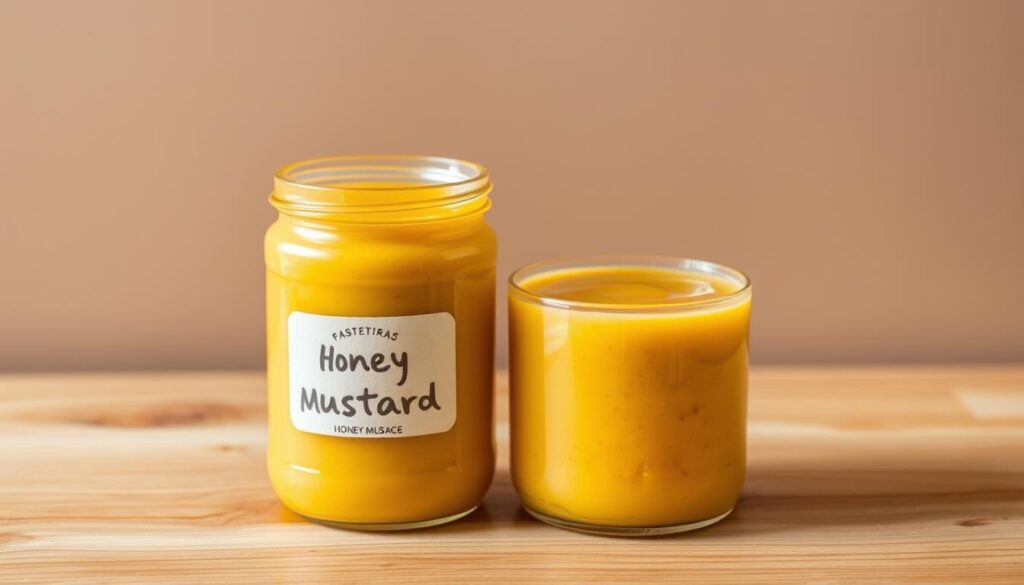
Refrigeration Guidelines
Once you’ve opened a packet, any unused sauce should be transferred to a small airtight container and refrigerated. The honey mustard will maintain its quality for approximately 7-10 days when refrigerated. Refrigeration is essential for opened sauce as the preservative system is compromised once the packet seal is broken, making the condiment susceptible to bacterial growth at room temperature.
Signs Your Sauce Has Gone Bad
It’s crucial to check your McDonald’s Honey Mustard sauce for signs of spoilage before consumption, especially if you’re planning to use it as an ingredient in another recipe rather than as a dipping sauce. Signs that your Honey Mustard sauce has spoiled include an off odor, separation that doesn’t recombine when stirred, visible mold, or a significant darkening of the normally light yellow color. If you notice any of these signs, it’s best to discard the sauce to avoid any potential health risks, particularly when using it as an item in other dishes.
Homemade McDonald’s Honey Mustard Recipe
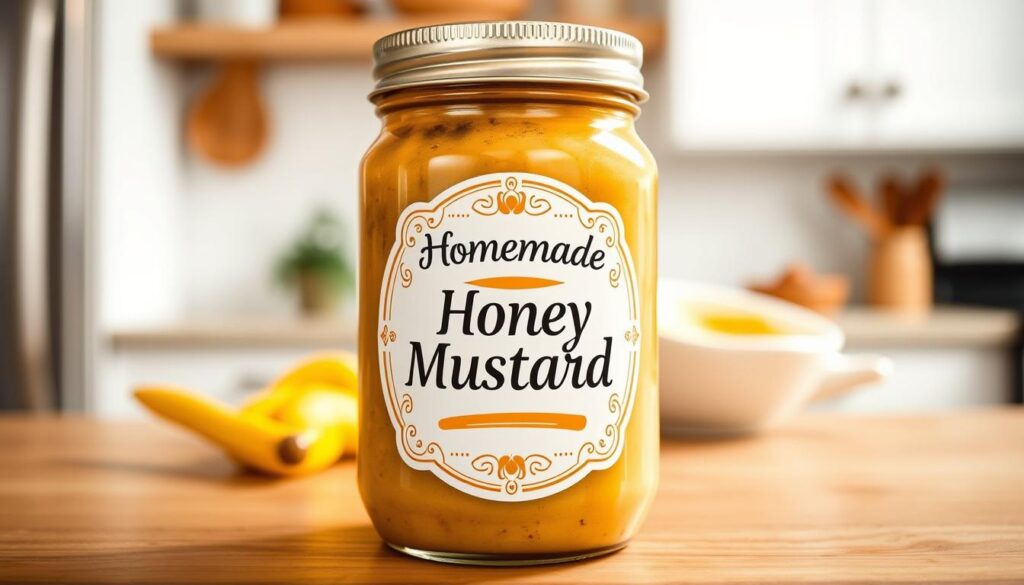
Making a copycat version of McDonald’s Honey Mustard sauce is easier than you think, and it’s a great way to customize the flavor to your liking. By creating a homemade version, you can adjust the sweetness level to suit your taste preferences, which many find much better than the original.
Ingredients You’ll Need
The base ingredients for your homemade McDonald’s Honey Mustard sauce include mayonnaise, yellow mustard, dijon mustard, honey, a touch of lemon juice, and a pinch of garlic powder. These are all readily available items in most home kitchens.
For the closest approximation to McDonald’s distinctive flavor, use a 2:1 ratio of honey to mustard, emphasizing the sweetness that characterizes the chain’s version of this classic sauce.
Step-by-Step Preparation
The preparation process is straightforward: simply whisk all ingredients together in a bowl until completely smooth. Then, allow the mixture to rest in the refrigerator for at least one hour before serving to let the flavors meld.
Taste testing is essential during preparation, as you may need to adjust the honey or mustard levels to match your memory of the McDonald’s honey mustard sauce flavor profile.
Storage Tips for Homemade Sauce
Your homemade version will lack the commercial preservatives of the original, meaning it has a shorter shelf life of approximately 1-2 weeks when stored in an airtight container in the refrigerator.
For the best flavor development, make your homemade sauce a day ahead of when you plan to use it. The extra time allows the ingredients to fully integrate and produces a more cohesive flavor similar to the restaurant version.
Health Considerations of McDonald’s Honey Mustard
The health considerations of McDonald’s Honey Mustard sauce are multifaceted and important to consider. As a popular dipping sauce, its nutritional content can impact your meal choices.
Sugar and Fat Content Analysis
McDonald’s Honey Mustard sauce contains 4 grams of sugar per serving, which is moderate compared to other dipping sauces. The fat content stands at 3.5 grams per serving, with only 0.5g being saturated fat, making it a relatively lighter option.
Per serving, the sauce has 60 calories, 125 mg of sodium, 6 g of carbs, and 0 g of protein. Here’s a breakdown of its nutritional profile:
| Nutrient | Per Serving |
|---|---|
| Calories | 60 |
| Fat | 3.5g |
| Saturated Fat | 0.5g |
| Sodium | 125mg |
| Carbs | 6g |
| Sugar | 4g |
| Protein | 0g |
Effective Portion Control Tips
To enjoy McDonald’s Honey Mustard while managing calorie intake, consider the “dip, don’t dunk” method. This involves lightly coating the edge of your food rather than submerging it, reducing overall calorie consumption.
Another strategy is to split a single packet between multiple people or menu items, allowing you to experience the flavor without consuming a full serving.
Exploring Healthier Alternatives
For a healthier version of McDonald’s Honey Mustard, you can make your own sauce using Greek yogurt instead of mayonnaise and raw honey instead of processed honey. Incorporating more Dijon mustard can also enhance flavor while reducing added sugar.
As noted by a nutrition expert, “Making simple swaps in recipes can significantly reduce calorie and sugar intake without sacrificing flavor.”
“Making simple swaps in recipes can significantly reduce calorie and sugar intake without sacrificing flavor.”
Being mindful of the nutritional content and using portion control can help you enjoy McDonald’s Honey Mustard sauce as part of a balanced diet.
Customer Reviews and Opinions
When it comes to McDonald’s Honey Mustard sauce, customers have a lot to say, from its versatility to its flavor profile. The sauce has garnered a dedicated following, with fans and critics alike sharing their opinions online.
Fans’ Praise
Devoted fans of McDonald’s Honey Mustard sauce frequently praise its smooth consistency and sweet flavor profile, particularly appreciating how it complements the savory aspects of chicken items without overwhelming them. Online reviews often highlight the sauce’s versatility, with customers noting they enjoy it not just with traditional chicken nuggets but also as an addition to burgers, breakfast items, and even as a french fry dipping alternative.
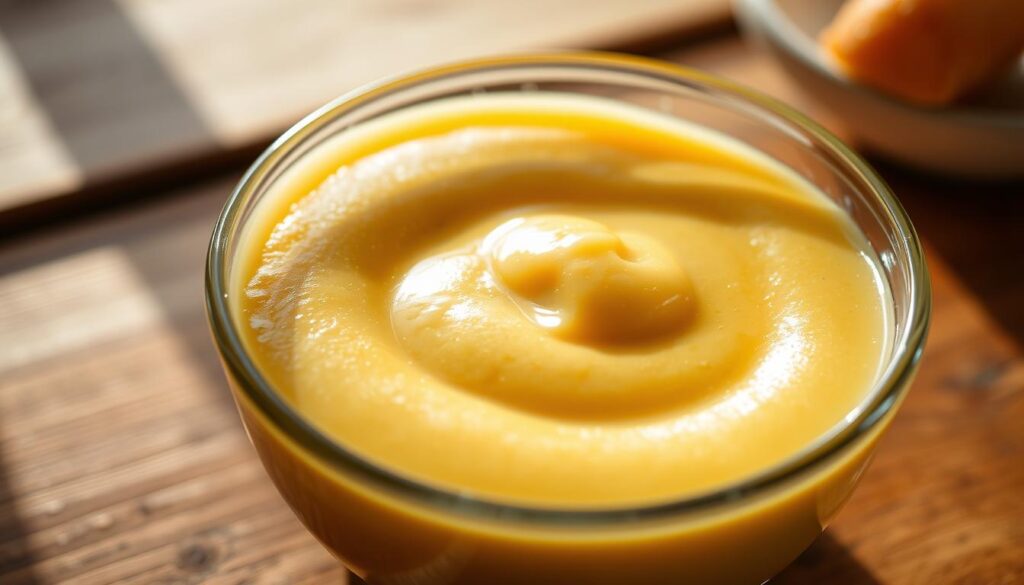
Common Criticisms
However, not all feedback is positive. Common criticisms in customer reviews center on the sauce being “too sweet” with “not enough mustard tang,” with some comparing it unfavorably to honey mustard sauces from competing chains that offer a more balanced flavor profile. In professional taste tests comparing all McDonald’s sauces, Honey Mustard typically ranks in the middle to lower range, often scoring below Tangy BBQ sauce and Sweet ‘N Sour sauce but above more polarizing options like Hot Mustard.
Taste Test Rankings
In a specific taste test of McDonald’s sauces, Honey Mustard ranked lower than Tangy BBQ, Creamy Ranch, and Sweet ‘N Sour sauces. The tester found it “overwhelmingly sweet” with barely detectable mustard flavor. This criticism highlights the divide in opinions on the sauce’s flavor profile, with some customers enjoying its sweetness while others find it overpowering.
The Cultural Impact of McDonald’s Honey Mustard
The cultural significance of McDonald’s Honey Mustard extends far beyond its taste, influencing how we interact with and perceive fast food. This honey mustard sauce has become an integral part of the McDonald’s experience, with its impact felt across various aspects of popular culture.
Social Media Presence
McDonald’s Honey Mustard has developed a modest but dedicated following on social media platforms. Fans share creative uses for the sauce, compare it to other dipping sauces, and occasionally campaign for its inclusion when limited-time sauce promotions threaten its availability. This online engagement highlights the sauce’s importance to its loyal consumer base.
The sauce’s presence on social media also reflects broader trends in how consumers interact with fast food. The sharing of experiences, recipes, and opinions about McDonald’s Honey Mustard contributes to a communal appreciation for the brand and its offerings.
Collector’s Market for Sauce Packets
The collector’s market for fast food condiments has extended to McDonald’s sauce packets, with online marketplaces showing Honey Mustard packets selling for significant markups. According to eBay listings, 50 Honey Mustard packets can sell for as much as $34.99, particularly to buyers in regions where the sauce isn’t readily available. This phenomenon underscores the sauce’s cultural significance and the willingness of fans to pay premium prices for it.
Some collectors specifically seek vintage or discontinued packaging variations of McDonald’s Honey Mustard, with older packet designs commanding premium prices in specialized online collecting communities. This aspect of the collector’s market highlights the sauce’s enduring appeal and its status as a collectible item.
Viral Trends Involving the Sauce
Unlike the viral phenomenon surrounding McDonald’s Szechuan Sauce, Honey Mustard has maintained a steady cultural presence without dramatic spikes in popularity. It represents the reliable supporting character in the world of McDonald’s condiments rather than the headline star. However, food bloggers and content creators occasionally feature McDonald’s Honey Mustard in “copycat recipe” videos and articles, generating millions of views over time.
The sauce has become part of the shared cultural experience of McDonald’s, with many adults recalling their specific sauce preferences as part of their childhood McDonald’s memories. This nostalgic connection transcends the condiment itself, speaking to the broader cultural significance of McDonald’s sauces in American life. The cultural impact of these sauces is not limited to their consumption; artists occasionally incorporate the distinctive packaging into pop art pieces, commenting on fast food’s place in American culture.
McDonald’s Honey Mustard Around the World
As you travel the world, you’ll discover that McDonald’s Honey Mustard has been adapted in unique ways to cater to diverse flavor preferences. This beloved condiment has become a staple in many international markets, with subtle formulation differences that reflect local tastes and culinary traditions.
Diverse Formulations
McDonald’s Honey Mustard sauce experiences subtle formulation differences across international markets. For instance, European versions often feature less sweetness and more pronounced mustard notes compared to their American counterpart. In some Asian markets, the chain adapts the Honey Mustard recipe to include regional flavor influences, such as a hint of ginger in certain East Asian countries or slightly spicier profiles in South Asian regions.

Regional Availability and Cultural Adaptations
Regional availability varies significantly, with some international McDonald’s locations not offering Honey Mustard at all. Instead, they feature locally preferred condiments that better align with cultural taste preferences. The color and consistency of McDonald’s Honey Mustard can also differ between countries, reflecting local preferences for appearance. Cultural adaptations of the sauce reflect local mustard traditions, particularly in countries like France and Germany where mustard holds significant culinary importance.
In markets where honey is less commonly used as a sweetener, McDonald’s sometimes reformulates the sauce using alternative sweetening agents while maintaining a similar flavor profile to the original. This approach allows the chain to balance maintaining consistent brand identity while respecting regional flavor preferences across world markets.
The global presence of McDonald’s Honey Mustard demonstrates the chain’s ability to adapt to local tastes while maintaining its brand identity. As a result, the sauce has become a fascinating example of how a single product can be reimagined across different cultures and regions.
Future of McDonald’s Honey Mustard
McDonald’s Honey Mustard is on the cusp of a new era, driven by innovation and consumer demand. As the fast food landscape continues to evolve, this beloved sauce is likely to undergo significant changes and developments.
Potential Recipe Changes
Industry analysts predict that McDonald’s may reformulate their Honey Mustard sauce to reduce sugar content, aligning with broader chain initiatives to offer healthier menu options. This move would help maintain the sauce’s familiar flavor profile while catering to the growing demand for healthier fast food.
New Product Integrations
The future likely holds new product integrations for the Honey Mustard sauce, with potential for it to be featured as a key ingredient in upcoming sandwich launches. As McDonald’s continues to expand their chicken items portfolio, Honey Mustard will likely play an increasingly prominent role in their sauce strategy.
Limited Edition Variations
McDonald’s has been experimenting with limited-time sauce variations across their menu, suggesting we might see seasonal Honey Mustard variations. These could include a spicier summer version or a honey-forward holiday edition, keeping the sauce fresh and exciting for customers.
| Potential Change | Description | Impact |
|---|---|---|
| Recipe Reformulation | Reducing sugar content | Healthier options for consumers |
| New Product Integrations | Feature in new sandwich launches | Increased visibility and usage |
| Limited Edition Variations | Seasonal variations (e.g., spicier or honey-forward) | Keeping the product fresh and exciting |
As McDonald’s continues to refine their digital ordering systems, they may introduce more customization options that allow customers to add Honey Mustard to any menu items during the ordering process. This could increase its visibility and usage across the menu, further solidifying its place in the chain’s offerings.
Conclusion
As we’ve discovered throughout this guide, McDonald’s Honey Mustard is a sauce that has earned its place in the world of fast food. This condiment represents an important part of the chain’s flavor ecosystem, offering a sweet-forward option that complements their chicken offerings while providing a distinctive taste experience.
Throughout this comprehensive guide, you’ve learned about the sauce’s origins, ingredients, nutritional profile, and the many creative ways it can be used beyond its intended purpose as a simple dipping sauce. Whether you’re a longtime fan or new to this particular sauce, understanding its composition and versatility can enhance your McDonald’s dining experience and potentially inspire creative culinary applications at home.
While not the most popular of McDonald’s sauces, Honey Mustard maintains a dedicated following of customers who specifically request it with their order, demonstrating the importance of offering diverse flavor options in the competitive fast food world. The cultural significance of McDonald’s Honey Mustard extends beyond its culinary applications, becoming part of the collective experience of the brand and even developing a collector’s market for those seeking to stockpile their favorite condiment.
As McDonald’s continues to evolve their menu to meet changing consumer preferences, their Honey Mustard sauce will likely adapt as well, potentially becoming healthier, more globally influenced, or integrated into new menu items over time. Next time you visit McDonald’s, consider trying their Honey Mustard sauce with something unexpected – whether it’s fries, a burger, or breakfast items – and you might discover a new favorite way to enjoy this sweet and tangy condiment that has maintained its place on the menu for years.
In conclusion, McDonald’s Honey Mustard sauce is more than just a condiment; it’s a testament to the power of innovation and customer preference in the fast food chain. As you continue to explore the world of fast food, remember that sometimes the most memorable experiences come from the simplest of flavor combinations.



